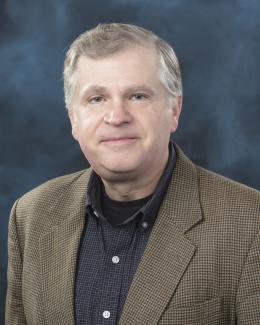
Dr. Philip Snyder received his BS in computational physics from Yale University and a PhD in plasma physics from Princeton University. Before joining ORNL, he served as the director of the Theory and Computational Science Department at General Atomics in San Diego. Dr. Snyder has extensive experience serving as principal investigator of large projects, leading groups and departments, and focusing research efforts on high-impact problems for the development of fusion energy. He has also collaborated with fusion experimental programs around the world, including DIII-D National Fusion Facility, Alcator C-Mod, National Spherical Torus Experiment (NSTX), Joint European Torus (JET), Japan Torus-60 (JT-60U), Mega Ampere Spherical Tokamak (MAST), Axially Symmetric Divertor Experiment (ASDEX-U), and Compact Assembly (COMPASS).
Snyder’s research has focused on electromagnetic plasma turbulence, along with the stability and dynamics of the edge region of magnetic fusion plasmas, particularly the physics of the edge transport barrier (“pedestal”) and edge localized modes (ELMs). He played a key role in the development of the peeling-ballooning model of ELMs, to understand and predict their onset and nonlinear dynamics. He later developed a predictive model of the pedestal structure (EPED), which has been coupled to models of the core plasma to predict and optimize performance of existing and future fusion devices. Snyder predicted the existence of a high fusion performance regime known as Super H-Mode, and engaged in experiments to discover and explore it, including experiments on Alcator C-Mod which achieved record pedestal pressure, and experiments on DIII-D which achieved record fusion gain for a device of that size.
Dr. Snyder became a Corporate Fellow in 2022 and serves as the Burning Plasma Foundations (BPF) section head at ORNL. Under his leadership, the BPF section works to develop the scientific understanding needed to address key fusion problems, including core–edge integration, transient control and mitigation, plasma–material interactions and high-performance steady-state operation. He guides section efforts to develop an integrated simulation capability for the coupled core–pedestal–boundary–wall system, including innovative approaches to simulate the edge and boundary plasma, and to develop advanced diagnostic, actuator, and control capabilities.
As a strong contributor to the scientific community, Snyder has engaged in numerous fusion community planning activities including serving as a member of the National Academies Committees on a Strategic Plan for U.S. Burning Plasma Research and Key Goals and Innovations Needed for a U.S. Pilot Plant. He has published more than 200 peer-reviewed journal articles cited more than 16,000 times, including six first author papers which have received special recognition from scientific journals. Snyder is also a Fellow of the American Physical Society (APS) and has been honored with the International Atomic Energy Agency Nuclear Fusion Award, the APS John Dawson Award for Excellence in Plasma Physics Research, and the Rosenbluth Award for Fusion Theory. His scientific advancements continue to have significant impact on the development of fusion energy in facilities around the world and are contributing to emerging efforts toward the future design and optimization of a U.S. fusion pilot plant.

